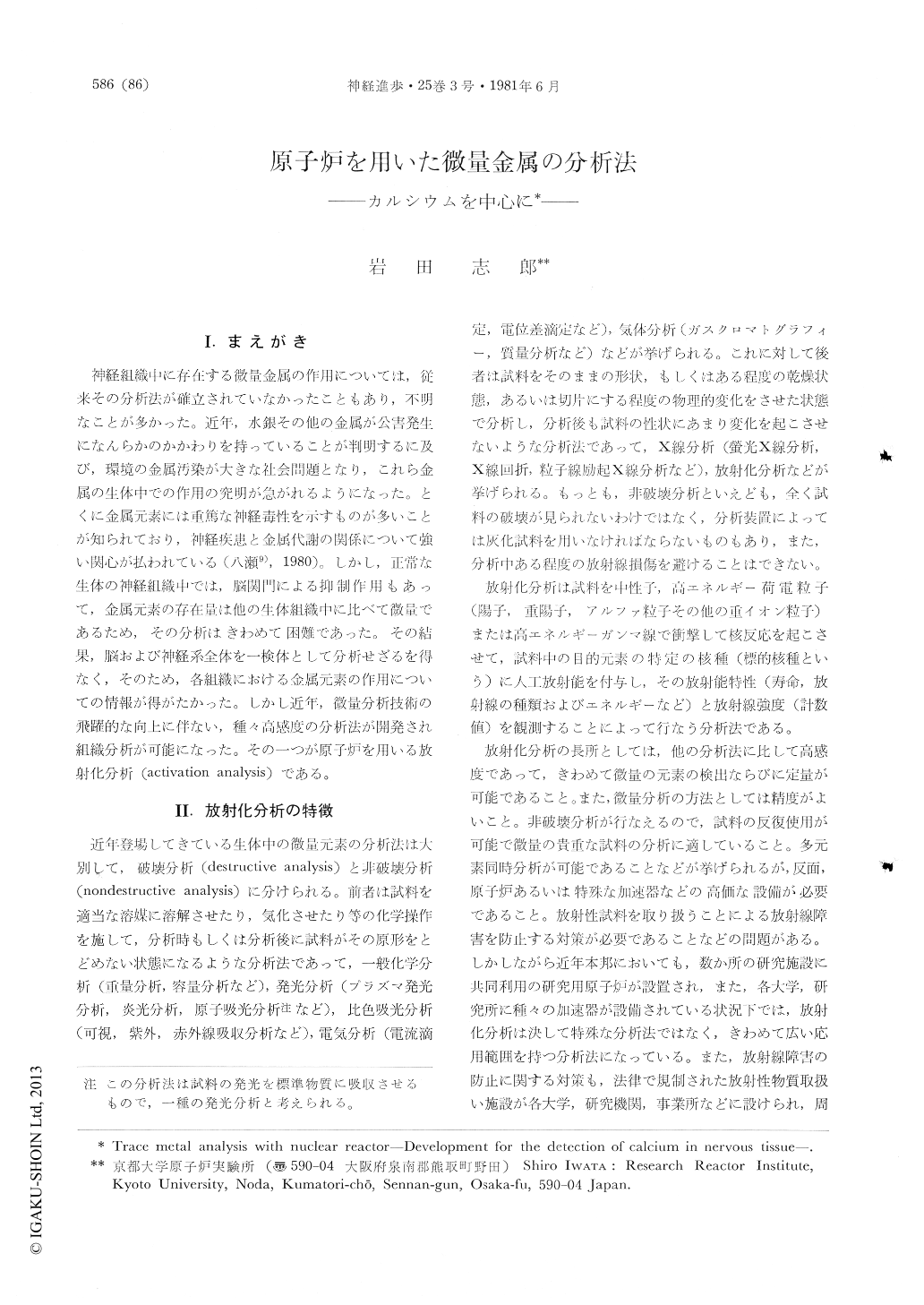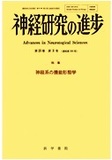Japanese
English
- 有料閲覧
- Abstract 文献概要
- 1ページ目 Look Inside
I.まえがき
神経組織中に存在する微量金属の作用については,従来その分析法が確立されていなかったこともあり,不明なことが多かった。近年,水銀その他の金属が公害発生になんらかのかかわりを持っていることが判明するに及び,環境の金属汚染が大きな社会問題となり,これら金属の生体中での作用の究明が急がれるようになった。とくに金属元素には重篤な神経毒性を示すものが多いことが知られており,神経疾患と金属代謝の関係について強い関心が払われている(八瀬9),1980)。しかし,正常な生体の神経組織中では,脳関門による抑制作用もあって,金属元素の存在量は他の生体組織中に比べて微量であるため,その分析はきわめて困難であった。その結果,脳および神経系全体を一検体として分析せざるを得なく,そのため,各組織における金属元素の作用についての情報が得がたかった。しかし近年,微量分析技術の飛躍的な向上に伴ない,種々高感度の分析法が開発され組織分析が可能になった。その一つが原子炉を用いる放射化分析(activation analysis)である。
Abstract
Recently, new, sensitive, and in some cases automated, methods of analysis for trace and mineral elements in biological materials have been developed and promoted their application in the medical science.
Nuclear techniques, paticularly activation analysis, are already extensively used for the in-vitro assay of trace and minor elements in biological materials. The method of reactor-flux thermal neutron activation analysis has an excellent character compared with another methods including other forms of nuclear activation analysis e. g. using fast neutrons, energetic charged particles, or energetic photons.

Copyright © 1981, Igaku-Shoin Ltd. All rights reserved.


